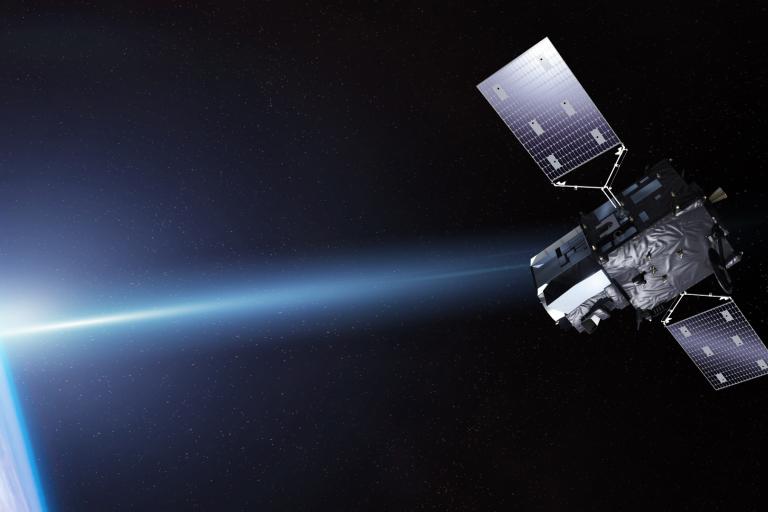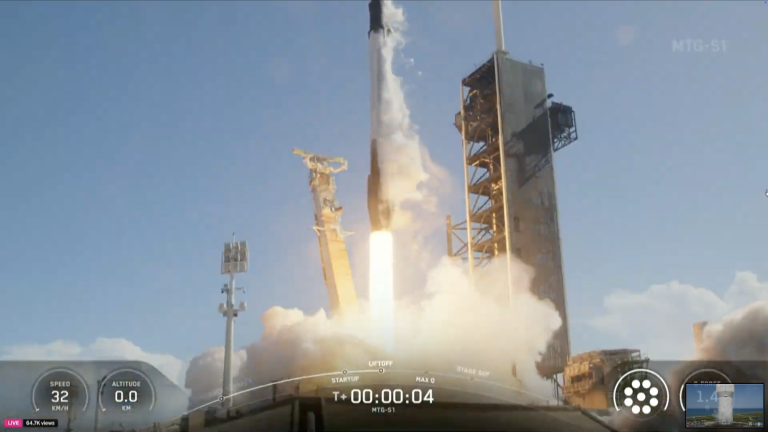Europe’s first geostationary sounder satellite has launched

MTG-S1, which also hosts the European Union’s Copernicus Sentinel-4 mission, will provide Europe’s national meteorological services with high-frequency data on temperature, humidity and trace gases throughout the atmosphere. This will enable forecasters to detect the earliest signs of severe weather, extend the lead times of weather warnings, improve forecasting, and help protect lives and property.
The benefits will be felt globally because the Meteosat Third Generation satellite system will enable more precise monitoring of our changing atmosphere, land and oceans.
“MTG-S1 will bring a treasure trove of new data that will provide National Meteorological and Hydrological Services with improved information for their weather prediction,” said WMO Secretary-General Celeste Saulo in a video message.
“Every time we check the weather, we rely on something bigger than technology. We rely on international trust, data, and cooperation. Reliable forecasts don’t happen by accident. They are made possible by a system of global solidarity. EUMETSAT is a key part of that global solidarity,” she said.
Applause broke out at EUMETSAT headquarters in Darmstadt, Germany late on 1 July, as staff, guests, and media watched a live stream of the satellite separating from its launcher and continuing its journey into orbit some 36,000 km above the equator.
With power and communications established, MTG-S1 entered its Launch and Early Operations Phase, during which engineers are activating systems and guiding it to its geostationary orbital position. From this position, aligned with Earth’s rotation, MTG-S1 will maintain an uninterrupted view of Europe, Africa, and surrounding regions.
“MTG-S will, for the first time, offer a space-based view of the full lifecycle of convective storms. This will provide tremendous support to national meteorological services in carrying out their vital work, helping to save lives, reduce disruption, and strengthen resilience” said Phil Evans, EUMETSAT Director-General.

- MTG-S1 will generate a completely new type of data product, especially suited to nowcasting severe weather events. The satellite will change the weather forecast in many ways:
- MTG-S1 uses its Infrared Sounder to capture data on temperature, humidity and trace gases. Its data is used to generate three-dimensional maps of the atmosphere. So, MTG-S1 shifts us from flat images to fully three-dimensional views of the atmosphere thus forecasters will see exactly what’s happening at each altitude.
- Data will help to detect and predict rapidly evolving and potentially dangerous weather systems, thus supports the nowcasting (and the EW4All initiative).
- Aviation is one the most important areas that will benefit from the MTG-S1 satellite’s data. By providing a three-dimensional picture of temperature, wind and humidity that evolves over time, MTG-S1 will help identifying the turbulent regions (turbulence is a perennial hazard for air traffic – causing both discomfort and danger for pilots and passengers), that means smarter flight planning.
- Infrared Sounder can detect greenhouse gases such as carbon monoxide, carbon dioxide, methane and ozone, thus supports the long-term records needed to track of climate change.
“It is thanks to the outstanding work our teams have done with EUMETSAT, the European Commission and dozens of European industry partners, that we are able to now look forward to more accurate and timely ways of predicting storm events and air pollution” said Simonetta Cheli, Director of Earth Observation Programmes at European Space Agency.
“This achievement is a powerful example of how European cooperation can provide vital data in support of services such as the Copernicus Atmosphere Monitoring Service that protect public health, strengthen environmental monitoring, and improve lives across Europe” said Christoph Kautz, Director for Space Policy, Earth Observation and Satellite Navigation at the European Commission.
For further updates on MTG-S1, visit EUMETSAT’s launch hub, which features news, interviews, and insights into the satellite’s journey.
EUMETSAT press release is here.

